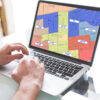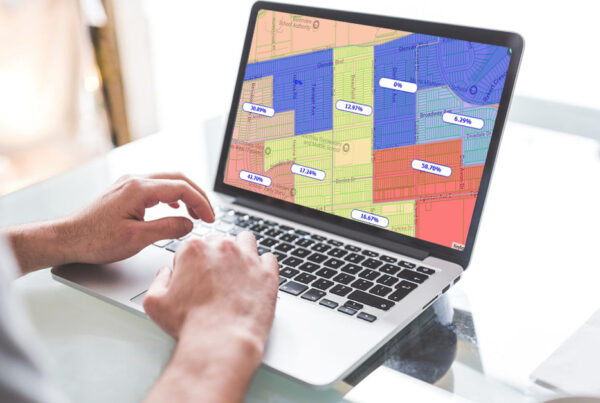
 The COVID-19 pandemic has created a lot of uncertainty, both at home and globally. For real estate sales professionals, developers, investors, and more, it has significantly disrupted business as usual.
The COVID-19 pandemic has created a lot of uncertainty, both at home and globally. For real estate sales professionals, developers, investors, and more, it has significantly disrupted business as usual.
It’s not always easy to know how to react during a period of hardship, especially one as unprecedented as the COVID-19 pandemic has been. We have been dealing with both a public health crisis and an economic crisis. Millions of Canadians are out of work, many businesses have ground to a halt, and what was predicted to be a hot spring real estate market has dwindled.
However, uncertain times such as this are when agility is needed the most — for your business, for your clients, and for preparing for the moment when the pandemic subsides and we all have to rebuild.
While opportunities may not be as abundant right now as before the pandemic, you still need to be able to act quickly — and remotely — when a good deal does come up, especially if that deal is essential.
That is where online real estate technology comes in.
Thanks to digital tools, much of the same business that happened face-to-face can be conducted online. Read on for how to stay agile and respond to opportunities, even in trying times.
- Find Properties Online
You may not be able to drive around looking for potential properties, however, you can do the virtual equivalent.
While you can use online listing sites, you may want to find properties that aren’t yet listed as well.
Using GeoWarehouse tools allows you to do this. You can search for a property even if the address isn’t available using map search — whether it’s listed or not.
In Map Search view, you can click on the area of the map where the property or properties you are interested in are located. Each time you click, the map will zoom in. You can continue clicking and zooming until you have located your property.
Want more help finding properties using Map Search? Check out our new 20-minute webinar that covers this very topic: http://marketing.geowarehouse.ca/acton/fs/blocks/showLandingPage/a/1288/p/p-01eb/t/page/fm/0?sid=TV2:iilSejsC3
- Estimate List Price/Property Value
With in-person contact limited, drive-by appraisals or desktop appraisals are being used more to estimate property value.
Your online tools can help here, too. Automated valuation models (AVM) provide an estimated property value based on a computer-driven, mathematical calculation. AVMs can’t review interior and exterior property conditions, but they can check other details, such as location, size and other key features, and search its systems database for the best set of comparables to generate a value.
This can go a long way towards helping with a desktop appraisal, deciding whether a property is a good investment, or setting a list price.
The new Home Value Range tool from GeoWarehouse is useful here — you can quickly find a home value range estimate just by entering an address. Learn more: https://www2.geowarehouse.ca/wp-content/uploads/2019/11/Teranet-AVM-Home-Value-Range-Flyer-R7.pdf
- Verify Homeownership Information
Even if business is being done differently now, you still need to keep due diligence in mind. Technology helps here too.
By accessing property information straight from the land registry database, you can verify critical details including the legal homeowners, sales history, comparable sales, MPAC assessment data, and much more.
This is critical for managing risk and making sure only qualified deals go through.
- See Images of the Property
You might not be able to visit the property in person, but you can access pictures of it — the exterior at least.
In the Property Details Report from GeoWarehouse, you can see external property images that include lot shape, lot size, street and surrounding properties, and more.
Other reports can give an overview of the neighbourhood. For instance, the new HoodQ Report integration allows professionals to quickly find nearby school catchments, public parks, transit stops, and more.
- Discover New Coverage Areas
While activity may be limited during this time, you can use the lull to find new areas you might not have considered before. Alternatively, if you have an essential client come to you from outside of your regular zone, you will be prepared.
Online tools make it much easier to expand your coverage area remotely. See how: https://www2.geowarehouse.ca/how-to-increase-your-real-estate-leads-and-coverage-effortlessly/
- Access Surveys, Plans, Condo Certificates, and More
There are certain items you may need that have traditionally only been accessible in hard copy or by fax — however, thanks to technology, that has changed.
Items you can receive online include:
- Property surveys
- Condo status certificates
- Parcel Registers*
This can help you stay flexible, manage risk, and do so while keeping social distancing in place.
Learn more about how to access these remotely: https://www2.geowarehouse.ca/three-real-estate-agent-tools-you-need-on-closing/
* An official product of the Ontario government pursuant to provincial land registration statutes.
While “normal” may be a ways off, it’s important for real estate to adapt to the current situation — however that looks for you right now. These tools can help maintain business as needed while maintaining public health guidelines.
They are also good to have in your pocket when the COVID-19 pandemic subsides as they can save you time and create more agility in your day-to-day business.
What remote technology are you using most during the COVID-19 pandemic? Share with us on social media. GeoWarehouse is on Twitter, Facebook, and LinkedIn.
See the latest updates from Teranet in our COVID-19 Information Centre: https://www.teranet.ca/teranet-news-categories/covid-19-information/
GeoWarehouse is here to support you. Learn more about leveraging our online property solutions or become a subscriber at www.geowarehouse.ca.







